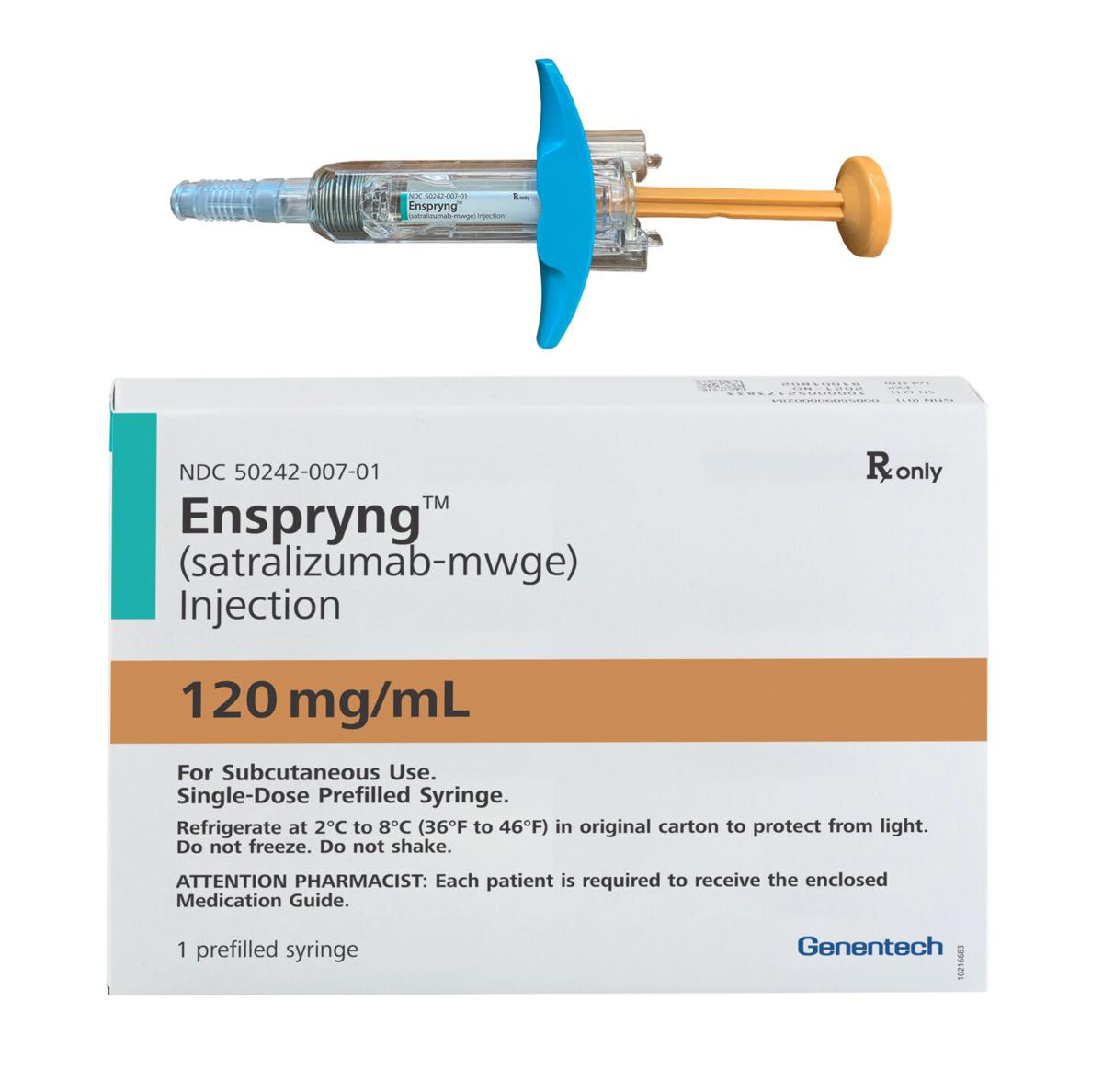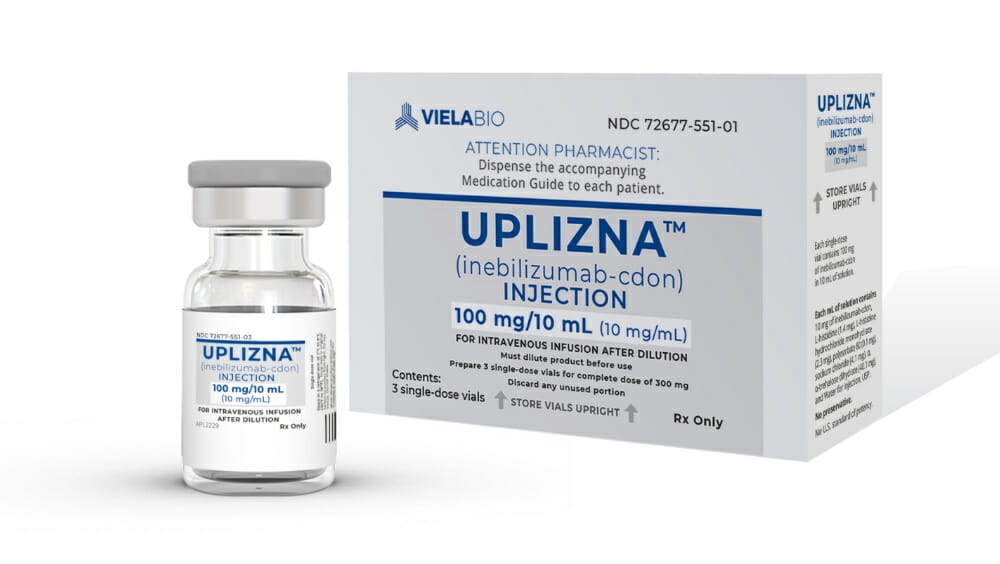New Neuromyelitis optica spectrum disorder treatments 2024
New Neuromyelitis optica spectrum disorder Treatments 2024
Neuromyelitis optica spectrum disorder (NMOSD) is a chronic disorder of the brain and spinal cord dominated by inflammation of the optic nerve (optic neuritis) and the spinal cord (myelitis). It is an autoimmune condition, meaning the body's immune system mistakenly attacks healthy cells, in this case primarily targeting the optic nerves and spinal cord, which can lead to a variety of symptoms. These symptoms may include visual impairment, weakness, numbness, and sometimes paralysis of the arms and legs, along with bladder and bowel dysfunction. NMOSD can be associated with antibodies that target a protein called aquaporin-4, but there are also cases without detectable antibodies, known as seronegative NMOSD. The disease course can vary, with some patients experiencing only one episode and others having relapses with partial recovery in between.
Treatment options for NMOSD are aimed at both acute management of relapses and prevention of future attacks. During an acute attack, high-dose corticosteroids are typically administered to reduce inflammation, and plasma exchange may be considered if there is no response to steroid therapy. For prevention of relapses, immunosuppressive therapies such as azathioprine, mycophenolate mofetil, or rituximab may be used. More recently, newer medications specifically approved for NMOSD include eculizumab, which targets the complement system to reduce the risk of relapse in patients who are aquaporin-4 antibody positive, and inebilizumab, a B-cell depleting therapy. It is crucial for patients to work closely with their healthcare provider to determine the most appropriate treatment plan, as the choice of medication may depend on several factors, including the presence of aquaporin-4 antibodies, tolerance to medications, and individual patient circumstances.

Treatment options
| Treatment option | Estimated cost | Efficacy | Eligibility |
|---|---|---|---|
| Corticosteroids | $100 - $300 | High for acute attacks | Most patients during acute attacks |
| Plasma exchange (PLEX) | $10,000 - $15,000 | High for acute attacks unresponsive to corticosteroids | Patients with acute attacks not responding to corticosteroids |
| Azathioprine | $30 - $100 | Moderate for prevention of relapse | Patients for long-term immunosuppression |
| Rituximab | $4,000 - $6,000 | High for prevention of relapse | Patients for long-term immunosuppression, often after failure of other therapies |
| Mycophenolate mofetil | $300 - $400 | Moderate for prevention of relapse | Patients for long-term immunosuppression |
| Eculizumab (Soliris) | $40,000 - $50,000 | High for prevention of relapse | Patients with aquaporin-4 antibody positive NMOSD |
| Enspryng (satralizumab) | $18,000 - $25,000 | High for prevention of relapse | Patients with aquaporin-4 antibody positive NMOSD or who are seronegative |
| Uplizna (inebilizumab) | $15,000 - $23,000 | High for prevention of relapse | Patients with aquaporin-4 antibody positive NMOSD |
| Tocilizumab (Off-label) | $2,000 - $3,000 | Moderate for prevention of relapse | Patients with refractory NMOSD |
| Experimental Treatments | Varies | Varies | Patients enrolled in clinical trials |
Treatments options in detail
First-Line Treatments for Neuromyelitis Optica Spectrum Disorder (NMOSD)
Neuromyelitis Optica Spectrum Disorder (NMOSD) is a rare, autoimmune disorder of the central nervous system that predominantly affects the optic nerves and spinal cord. The most common treatments for NMOSD aim to reduce the severity of attacks and to prevent relapses. First-line treatments typically involve immunosuppressive and immunomodulatory therapies.
Corticosteroids, such as methylprednisolone, are often the initial treatment during acute NMOSD attacks to reduce inflammation and suppress the immune system. High-dose intravenous corticosteroids are usually administered for a short period, followed by a tapering dose of oral steroids.
Plasma exchange (PLEX) is another treatment used during acute NMOSD attacks, especially if there is no response to corticosteroids. PLEX involves removing the patient's blood plasma and replacing it with a plasma substitute, which can help remove pathogenic antibodies from the blood.
For long-term prevention of NMOSD relapses, immunosuppressants such as azathioprine, mycophenolate mofetil, and rituximab are commonly prescribed. Azathioprine and mycophenolate mofetil inhibit the proliferation of immune cells, while rituximab is a monoclonal antibody that targets CD20-positive B cells, which are implicated in the pathogenesis of NMOSD.
Enspryng (Satralizumab) for NMOSD
Enspryng (satralizumab) is a monoclonal antibody that was approved by the FDA for the treatment of NMOSD in adults who are anti-aquaporin-4 (AQP4) antibody-positive. Satralizumab works by inhibiting the interleukin-6 (IL-6) receptor, which plays a role in the inflammatory process of NMOSD. It is administered subcutaneously and can be used as a monotherapy or in combination with other immunosuppressive drugs.
Uplizna (Inebilizumab) for NMOSD
Uplizna (inebilizumab) is another monoclonal antibody that has been approved by the FDA for the treatment of NMOSD in adult patients who are anti-AQP4 antibody-positive. Inebilizumab targets CD19, a protein on the surface of B cells, leading to the depletion of B cells, including autoantibody-secreting cells. It is administered intravenously and has shown efficacy in reducing the risk of NMOSD relapse.
Experimental and Off-Label Treatments for NMOSD
There are several experimental and off-label treatments being explored for NMOSD. These include, but are not limited to, tocilizumab, an IL-6 receptor inhibitor; eculizumab, a complement inhibitor; and methotrexate, a chemotherapy agent and immune system suppressant. These treatments are not approved by the FDA specifically for NMOSD but may be used off-label in certain cases or are being studied in clinical trials.
Tocilizumab, similar to satralizumab, blocks the IL-6 receptor and has been used off-label for NMOSD. Eculizumab targets the complement system, which is part of the immune response that can damage nerve cells in NMOSD. Methotrexate is used off-label for its immunosuppressive properties, although its use in NMOSD is less common.
Other experimental treatments include stem cell transplantation and the use of other monoclonal antibodies that target different aspects of the immune response. These treatments are still in the research phase and are not widely available.
Supportive Treatments for NMOSD
In addition to immunosuppressive and immunomodulatory treatments, supportive care is crucial for managing symptoms and improving the quality of life for patients with NMOSD. This may include pain management, rehabilitation therapies such as physical therapy, occupational therapy, and speech therapy, and the use of assistive devices to help with mobility and daily activities.
Pain management often involves the use of medications such as anticonvulsants, antidepressants, and analgesics to control neuropathic pain. Rehabilitation therapies aim to help patients recover function after an attack and to maintain as much independence as possible.
Considerations and Monitoring
When treating NMOSD, it is important to consider the potential side effects and risks associated with immunosuppressive therapies. These can include an increased risk of infections, liver toxicity, and possible malignancies. Therefore, patients undergoing treatment for NMOSD require regular monitoring, which may include blood tests, liver function tests, and screening for infections.
Additionally, because NMOSD is a rare disease, treatment decisions are often based on limited evidence, and what works for one patient may not work for another. It is essential for healthcare providers to closely monitor the patient's response to treatment and make adjustments as necessary. Collaboration with a team of specialists, including neurologists, ophthalmologists, and rehabilitation experts, is often required to provide comprehensive care for NMOSD patients.
Finally, patient education and support are key components of managing NMOSD. Patients and their families should be informed about the nature of the disease, the potential side effects of treatments, and the importance of adherence to therapy and follow-up appointments. Support groups and patient advocacy organizations can provide valuable resources and community support for those affected by NMOSD.
Symptoms
Optic Neuritis
Optic neuritis is a hallmark symptom of Neuromyelitis Optica Spectrum Disorder (NMOSD). It is characterized by inflammation of the optic nerve, which can lead to a sudden decrease in vision in one or both eyes. Patients may experience pain with eye movement and notice that colors appear less vibrant. Visual loss can range from mild blurring to complete blindness. The severity and duration of symptoms can vary, with some individuals experiencing temporary visual disturbances and others suffering from permanent vision loss.
Transverse Myelitis
Transverse myelitis is another core symptom of NMOSD, involving inflammation of the spinal cord. This can result in a range of neurological deficits below the level of the lesion. Common manifestations include weakness or paralysis of the limbs, sensory disturbances such as numbness or tingling, and loss of bladder and bowel control. Patients may also experience sharp or shooting pains and an abnormal sensation of tightness around the trunk or limbs, often referred to as a "girdle-like sensation."
Area Postrema Syndrome
Area postrema syndrome, which involves the area postrema region of the brainstem that controls vomiting and satiety, is frequently seen in NMOSD. Patients may present with intractable hiccups, nausea, and vomiting. These symptoms can be severe and persistent, leading to complications such as weight loss and dehydration.
Respiratory Dysfunction
In some cases of NMOSD, respiratory dysfunction can occur if the cervical spinal cord or medulla is affected. This can lead to difficulty breathing and may require ventilatory support in severe cases. Respiratory failure is a life-threatening complication and warrants immediate medical attention.
Brainstem Symptoms
NMOSD can also affect the brainstem, leading to a variety of symptoms depending on the specific regions involved. These may include problems with coordination and balance (ataxia), double vision (diplopia), facial numbness or weakness, and difficulties with speech and swallowing. Brainstem involvement can also contribute to sleep disorders, such as sleep apnea.
Cerebral Symptoms
While less common, NMOSD can involve the cerebrum, which may result in symptoms such as seizures, encephalopathy (a broad term for any brain disease that alters brain function or structure), and cognitive changes like confusion, memory loss, or difficulties with concentration and attention.
Endocrine and Autonomic Dysfunction
Some individuals with NMOSD may experience endocrine and autonomic dysfunction. This can include temperature regulation issues, inappropriate antidiuretic hormone secretion (SIADH), and other hormonal imbalances. Autonomic disturbances might manifest as changes in heart rate, blood pressure, and sweating.
Long-term and Recurrent Symptoms
NMOSD is often a relapsing condition, with symptoms returning or worsening periodically. Over time, repeated attacks can lead to cumulative damage and disability. Some patients may experience residual symptoms between attacks, such as chronic pain, muscle stiffness (spasticity), and ongoing problems with bladder and bowel function.
Pain
Pain is a common symptom in NMOSD, experienced by many patients. It can take various forms, including neuropathic pain due to nerve damage, musculoskeletal pain from spasticity or weakness, and visceral pain related to autonomic dysfunction. Pain management is an important aspect of NMOSD treatment.
Psychological Impact
The chronic and unpredictable nature of NMOSD can have a significant psychological impact on patients. Symptoms such as chronic pain, disability, and the fear of relapse can contribute to depression and anxiety. The psychological effects of NMOSD are an important consideration in the overall management of the disease.
Fatigue
Fatigue is a frequently reported symptom among individuals with NMOSD. It can be debilitating and affect a person's quality of life. Fatigue in NMOSD may be a direct result of the disease process or a secondary effect of other symptoms, such as chronic pain or sleep disturbances.
Sensory Disturbances
Sensory disturbances are common in NMOSD and can include altered sensations such as numbness, tingling (paresthesias), or even complete loss of sensation in certain areas of the body. These symptoms can be particularly distressing when they affect the hands and feet, as they can interfere with daily activities and mobility.
Visual Disturbances
Apart from optic neuritis, individuals with NMOSD may experience other visual disturbances. These can include reduced visual acuity, blind spots (scotomas), and pain on eye movement. Persistent visual symptoms can significantly affect a patient's ability to perform tasks that require good vision.
Mobility and Coordination Issues
As a result of spinal cord involvement, patients with NMOSD may face challenges with mobility and coordination. Spasticity, weakness, and ataxia can make walking difficult and increase the risk of falls. Some individuals may require mobility aids or assistive devices to maintain independence.
Sexual Dysfunction
Sexual dysfunction is an often underreported symptom of NMOSD. It can arise due to spinal cord lesions affecting the neural pathways responsible for sexual response. Both men and women with NMOSD may experience difficulties with sexual arousal, sensation, and orgasm.
It is important to note that the symptoms of NMOSD can vary widely among individuals and that not all patients will experience every symptom. Additionally, the severity and combination of symptoms can differ from one person to another, making personalized medical care essential for managing the disease effectively.
Cure
Current Therapeutic Approaches for Neuromyelitis Optica Spectrum Disorder
As of the current medical knowledge, there is no definitive cure for Neuromyelitis Optica Spectrum Disorder (NMOSD), which is a chronic disorder of the central nervous system characterized by inflammatory lesions primarily in the optic nerves and spinal cord. However, there are several therapeutic strategies aimed at managing the symptoms, preventing relapses, and improving the quality of life for patients with NMOSD.
Immunosuppressive Therapy
Immunosuppressive therapy is a cornerstone in the management of NMOSD, as the disease is believed to be mediated by an autoimmune process. Drugs such as azathioprine, mycophenolate mofetil, and rituximab have been used off-label to prevent relapses. While these medications do not cure NMOSD, they can reduce the frequency and severity of attacks.
Monoclonal Antibodies
Recent advancements have led to the development of monoclonal antibodies targeting specific pathways implicated in NMOSD pathogenesis. Eculizumab, which inhibits the complement system, has been approved for the treatment of NMOSD in patients who are positive for aquaporin-4 antibodies. Iniparib, satralizumab, and tocilizumab are other monoclonal antibodies that have shown promise in clinical trials and may be used off-label or are in the process of seeking approval for the treatment of NMOSD.
Plasma Exchange and Intravenous Immunoglobulin
Plasma exchange (PLEX) and intravenous immunoglobulin (IVIG) are therapeutic options used for acute NMOSD attacks. PLEX is believed to remove pathogenic antibodies and other components of the immune system from the blood, while IVIG provides a broad range of antibodies that can help modulate the immune response. These treatments are not cures but can help manage acute exacerbations and improve neurological outcomes.
Corticosteroids
Corticosteroids, such as methylprednisolone, are often the first line of treatment during an acute NMOSD attack. High-dose corticosteroids can reduce inflammation and are used to manage acute symptoms. Long-term use of corticosteroids is generally avoided due to potential side effects, and they are not considered a cure for NMOSD.
Supportive Care and Symptom Management
Supportive care is crucial for patients with NMOSD to manage symptoms and improve their daily functioning. Physical therapy, occupational therapy, and pain management are important components of supportive care. Medications may also be used to address specific symptoms such as neuropathic pain, muscle spasticity, and bladder dysfunction.
Lifestyle Modifications and Rehabilitation
Lifestyle modifications and rehabilitation play a significant role in managing NMOSD. Regular exercise, a balanced diet, and avoiding triggers that may precipitate relapses are recommended. Rehabilitation services can help patients regain function and adapt to any disabilities resulting from the disease.
Investigational Therapies and Ongoing Research
Research into NMOSD is ongoing, and new investigational therapies are being explored. These include stem cell transplantation and novel immunomodulatory agents. Clinical trials are essential for evaluating the efficacy and safety of these potential treatments, which may one day change the therapeutic landscape of NMOSD.
Conclusion on the Cure for NMOSD
In conclusion, while there is currently no cure for NMOSD, there are multiple treatment options available that can help control the disease and improve the quality of life for those affected. The landscape of NMOSD treatment is evolving, with new therapies undergoing clinical trials that offer hope for more effective management in the future. Patients with NMOSD should work closely with their healthcare providers to develop a comprehensive treatment plan tailored to their individual needs.
Access Neuromyelitis optica spectrum disorder medicines today
If Neuromyelitis optica spectrum disorder medicines are not approved or available in your country (e.g. due to supply issues), you can access them via Everyone.org.
How Everyone.org works

Make an enquiry
Choose the medicine you want to access, answer a couple of questions, and upload your prescription to speed things up. We’ll get back to you within 24 hours.


Make an enquiry
Choose the medicine you want to access, answer a couple of questions, and upload your prescription to speed things up. We’ll get back to you within 24 hours.


Breeze through the paperwork
We'll guide you through the required documents for importing unapproved medicine, ensuring you have all the necessary information.


Get a personalized quote
We’ll prepare a quote for you, including medicine costs and any shipping, administrative, or import fees that may apply.


Receive your medicine
Accept the quote and we’ll handle the rest - sourcing and safely delivering your medicine.

Some text on this page has been automatically generated. Speak to your physician before you start a new treatment or medication.
Let's talk
If you have any questions, call us or send us a message through WhatsApp or email:
Contact us




